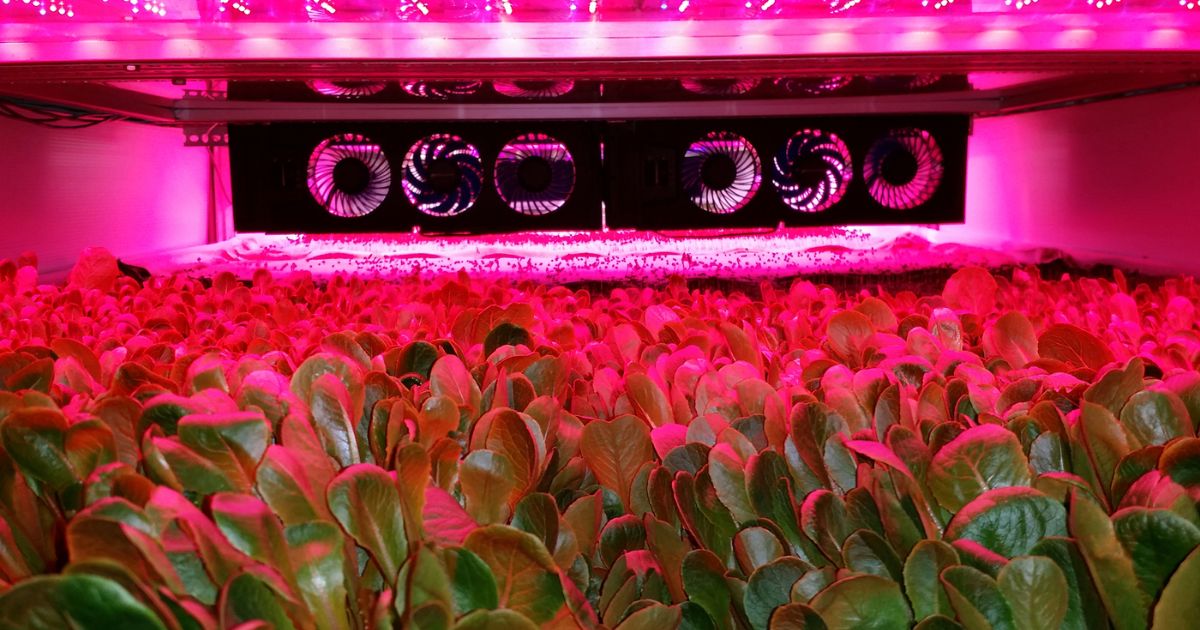LED grow lights are artificial lighting sources designed to stimulate plant growth in indoor settings. Concerns about their harm to humans arise due to the predominant blue light in their spectrum. Prolonged exposure, especially at night, may lead to eye strain and potential disruptions in sleep patterns.
Dive into the world of indoor gardening without fretting over your well-being. Here is a question erase “Are LED Grow Lights Harmful to Humans?” Uncover the facts behind the myths, and discover how these innovative lights balance plant growth and human safety.
LED grow lights are generally safe for humans. While concerns exist, responsible usage can mitigate potential risks. Prolonged exposure to the blue light emitted by LED lights may cause eye strain, so taking breaks during extended use is advisable. Adhering to safety measures ensures a balance between enjoying the benefits of LED grow lights and safeguarding human well-being.
Key Takeaways
- The potential harm of LED grow lights to humans is minimized with responsible usage. Taking breaks during extended exposure and using protective eyewear can mitigate concerns related to eye strain.
- LED grow lights offer numerous benefits for plant growth, promoting healthier plants and increased yield. Understanding the technology’s positive impact on cultivation is essential.
- Compared to traditional lighting, LED grow lights are environmentally friendly. Their energy efficiency and extended lifespan contribute to sustainability, aligning with global efforts toward eco-conscious practices.
- The continuous evolution of LED technology brings about enhanced performance, increased efficiency, and improved safety features. Staying informed about these advancements ensures users benefit from cutting-edge solutions.
- Striking a balance between cultivating thriving plants and ensuring user safety is essential. By adopting a mindful approach, individuals can harness the advantages of LED grow lights without compromising human health.
Common Myths About LED Grow Lights
In the realm of indoor gardening, myths surrounding LED grow lights persist. One prevalent misconception suggests that these lights emit harmful radiation. However, scientific evidence refutes this claim, emphasizing the safety of LED technology. Another myth revolves around the idea that LED lights are detrimental to human eyesight.
Contrary to this belief, LED grow lights are safe for human eyes when used responsibly, with potential eye strain easily mitigated by taking breaks during extended exposure. Dispelling these myths is crucial for fostering accurate understanding and promoting the benefits of LED grow lights.
Concerns About Harm to Humans
As the popularity of LED grow lights rises, questions about their potential harm to humans emerge. Some worry about My LED Light Remote Working, particularly the prevalence of blue light. While studies indicate minimal risks, concerns about eye strain and disruptions to circadian rhythms persist.
It’s crucial to delve into these concerns, separating fact from misconception, and explore how responsible usage and adherence to safety measures can address worries about the impact of LED grow lights on human well-being.
| Concerns | Facts |
|---|---|
| Blue Light Exposure | Minimal risk with responsible use; may cause eye strain. |
| Circadian Rhythm Disruption | Prolonged exposure, especially at night, may impact sleep. |
| Safety Measures | Adhere to guidelines, take breaks, and use protective eyewear. |
| Environmental Impact | Energy-efficient and eco-friendly compared to traditional lighting. |
| Technological Advancements | Continuous improvements ensure enhanced safety features. |
Potential Health Risks
While LED grow lights are generally considered safe, concerns arise regarding prolonged exposure to blue light. Blue light, a predominant component of the LED spectrum, has been associated with potential eye strain and discomfort. Studies suggest that extended exposure, particularly during nighttime use, may disrupt circadian rhythms.
It’s crucial to emphasize that these risks are minimal with responsible usage, and implementing safety measures such as protective eyewear and breaks during extended exposure can further mitigate any potential health concerns.
Safety Measures and Regulations
Safety measures and regulations play a pivotal role in ensuring the responsible use of LED grow lights. To address concerns about potential harm to humans, stringent guidelines govern the production and implementation of these lighting systems.
Adhering to these standards is crucial for manufacturers, ensuring that their products meet specific criteria for human and environmental safety. Users, in turn, can confidently embrace LED grow lights, knowing that industry regulations prioritize their well-being and the sustainable use of this innovative technology.
Benefits of LED Grow Lights for Indoor Gardening
LED grow lights offer unparalleled benefits for indoor gardening. Their energy-efficient nature not only reduces electricity costs but also minimizes heat emission, creating an optimal environment for plant growth.
The customizable light spectrum caters to different plant needs, promoting healthier and more vigorous growth. Longevity and low maintenance further contribute to their appeal, making LED grow lights a sustainable and cost-effective choice for individuals cultivating plants indoors.
Common Myths About LED Grow Lights
In the realm of indoor gardening, myths surrounding LED grow lights persist. One prevalent misconception suggests that these lights emit harmful radiation. However, scientific evidence refutes this claim, emphasizing the safety of LED technology.
Another myth revolves around the idea that LED lights are detrimental to human eyesight. Contrary to this belief, LED grow lights are safe for human eyes when used responsibly, with potential eye strain easily mitigated by taking breaks during extended exposure. Dispelling these myths is crucial for fostering accurate understanding and promoting the benefits of LED grow lights.
Balancing Human and Plant Health

Balancing human and plant health is a delicate equilibrium in the realm of indoor gardening. As enthusiasts embrace LED grow lights for their efficacy in fostering lush plant growth, it becomes paramount to consider the well-being of humans interacting with these artificial light sources.
Implementing mindful strategies, such as using protective eyewear and taking breaks during extended exposure, ensures a harmonious coexistence. This approach emphasizes the symbiotic relationship between cultivating thriving plants and safeguarding the health of those tending to them.
Comparisons with Other Lighting Sources
When comparing LED grow lights with traditional lighting sources like fluorescent and high-intensity discharge (HID) lights, the advantages of LEDs become evident. LED lights stand out for their energy efficiency, longer lifespan, and customizable spectrum.
Unlike fluorescent lights, which can be less energy-efficient, and HID lights, which emit more heat, LED grow lights offer a balanced and sustainable solution for indoor gardening, ensuring optimal plant growth without compromising on safety or environmental impact.
Latest Technological Advancements
When comparing LED grow lights with other lighting sources, it becomes evident that LED technology offers significant advantages. Unlike traditional fluorescent lights, LEDs are more energy-efficient and emit less heat, providing a favorable environment for plant growth.
In contrast to high-intensity discharge (HID) lights, LEDs have a longer lifespan and offer a customizable spectrum, allowing users to tailor the light to specific plant needs. These comparisons highlight the superior performance and versatility of LED grow lights in the realm of indoor gardening.
Environmental Impact
The environmental impact of LED grow lights is a crucial consideration in their widespread adoption. Unlike traditional lighting sources, LEDs are highly energy-efficient, consuming less electricity and reducing overall carbon footprint.
Additionally, their extended lifespan minimizes electronic waste, contributing to a more sustainable approach to lighting. With a lower environmental impact, LED grow lights align with the global push for eco-friendly practices, making them a responsible choice for both indoor gardening enthusiasts and environmentally conscious consumers.
FAQs
Are LED grow lights harmful to human eyes?
No, with responsible usage, LED grow lights are safe for human eyes, although prolonged exposure may cause eye strain.
Are there safety measures to minimize potential risks of LED grow lights?
Yes, adhering to safety measures and regulations, such as taking breaks during extended use, helps minimize potential risks.
How do LED grow lights compare to other lighting sources in terms of safety?
LED grow lights are generally safer than traditional sources, with less heat emission and adherence to safety standards, reducing potential risks.
Conclusion
In conclusion, the debate surrounding the potential harm of LED grow lights to humans reveals a nuanced reality. While concerns exist, responsible usage and an understanding of the technology can mitigate risks. The benefits of energy efficiency, plant growth optimization, and a reduced environmental footprint underscore the positive aspects of LED grow lights.
By dispelling myths and implementing safety measures, individuals can enjoy the advantages of this innovative technology without compromising human well-being. Striking a balance between cultivating thriving plants and ensuring user safety is essential, reinforcing the notion that, when used mindfully, LED Grow Lights Harmful to Humans can be a valuable asset for both plants and people alike.













